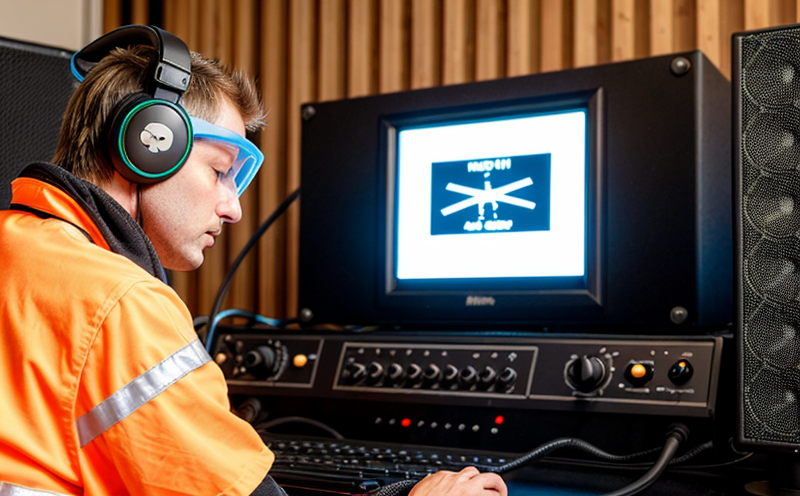ASTM F963 Infant Toy Rattle and Noise Hazard Test
The ASTM F963 standard is a comprehensive guide that specifies the requirements, test methods, specifications, and classifications of toys intended for children under 8 years old. The focus on infant toys within this standard underscores the unique safety considerations required to protect young children from potential hazards. Among these hazards are noise-related risks, which can pose significant dangers if not properly managed.
The infant toy rattle is a classic example of a product that must adhere strictly to ASTM F963 guidelines due to its frequent use by infants who may put it in their mouths or ears. The rattle's design and materials are subject to rigorous testing, particularly for noise levels, to ensure they do not exceed safe thresholds. This test ensures that the toy does not produce excessive sound that could cause hearing damage or discomfort.
According to ASTM F963-21, section 8.5 specifically addresses the requirements for infant toys, including rattles. It mandates testing procedures designed to evaluate noise levels and other safety parameters. The test procedure involves placing the rattle in a sound chamber where its sound is measured using an octave band analyzer. This ensures that the toy's noise level does not exceed 95 dB(A) as per ASTM F963-21, clause 8.5.4.
The testing process for infant toys like rattles is meticulous and involves several critical steps:
- Selection of appropriate test specimens to represent the product's design and materials.
- Calibration of all instrumentation used in the tests, including octave band analyzers and sound chambers.
- Placement of the rattle in the sound chamber for noise level measurement.
- Data analysis to ensure compliance with the specified limits.
The results of these tests are documented meticulously and form part of the product's safety dossier. Compliance with ASTM F963 ensures that toys meet stringent safety standards, thereby protecting children from potential harm.
Understanding the importance of this test is crucial for quality managers, compliance officers, R&D engineers, and procurement teams involved in toy manufacturing and distribution. By adhering to these standards, manufacturers can ensure their products are safe, compliant, and fit for purpose.
To summarize, ASTM F963 Infant Toy Rattle and Noise Hazard Test plays a vital role in safeguarding the health and well-being of infants by ensuring that toys meet rigorous safety standards. This test is essential to prevent potential hazards associated with noise levels, which can be particularly dangerous for young children.
Why It Matters
The ASTM F963 Infant Toy Rattle and Noise Hazard Test is crucial not only in safeguarding the health and well-being of infants but also in ensuring compliance with international safety standards. Compliance with these standards is a legal requirement in many countries, including the United States, Europe, and Asia.
From a regulatory perspective, this test ensures that toys are safe for use by children under 8 years old, particularly focusing on infant toys like rattles. The test helps manufacturers identify potential hazards early in the development process, allowing them to make necessary adjustments before product release.
The impact of this testing extends beyond legal compliance; it also serves as a testament to a company's commitment to quality and safety. By adhering to ASTM F963 standards, companies can enhance their reputation and build trust with consumers. This is especially important in the highly competitive toy market where brands are constantly striving to maintain a positive image.
Moreover, compliance with these standards helps manufacturers stay ahead of potential recalls or product bans that could result from non-compliance with safety regulations. By conducting thorough noise hazard tests on infant toys like rattles, companies can avoid costly legal battles and negative publicity associated with unsafe products.
In conclusion, the ASTM F963 Infant Toy Rattle and Noise Hazard Test is not just a regulatory requirement but also an essential step towards ensuring product safety and protecting public health. It reflects a company's commitment to quality and helps build trust in its brand.
Applied Standards
| Standard | Description |
|---|---|
| ASTM F963-18 | This standard covers the requirements, test methods, specifications, and classifications of toys intended for children under 8 years old. It specifically addresses infant toys in section 8.5. |
| EN 71-1:2019 | This European standard provides requirements and test methods for mechanical & physical properties of toys, including noise levels. |
| IEC 62196:2008 | Although primarily focused on electrical toys, this standard also includes guidelines applicable to acoustic safety in toy design. |
The application of these standards ensures that infant toys like rattles meet the necessary requirements for noise levels and other safety parameters. Compliance with ASTM F963-18 is particularly important as it directly addresses the specific needs of infant toys, ensuring they do not pose a risk due to excessive noise.
Competitive Advantage and Market Impact
- Enhanced Safety Reputation: Compliance with ASTM F963 can significantly enhance a company's reputation in the market. Consumers are increasingly aware of toy safety issues, and those who comply with these standards are likely to gain consumer trust.
- Avoidance of Legal Issues: By conducting thorough noise hazard tests on infant toys like rattles, companies can avoid potential legal battles and product bans that could result from non-compliance with safety regulations.
- Innovation Opportunities: Adhering to ASTM F963 standards opens up opportunities for innovation in toy design. Manufacturers can explore new materials and technologies that meet the stringent safety requirements, thereby setting themselves apart from competitors.
- Better Consumer Trust: Compliance with these standards helps build long-term consumer trust, leading to repeat purchases and positive word-of-mouth recommendations.
The impact of compliance extends beyond individual companies; it also contributes positively to the overall reputation of the toy industry. By setting high standards for safety, companies can help protect consumers from potential hazards and contribute to a safer market environment.





